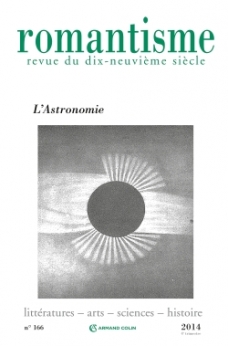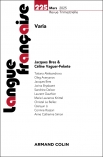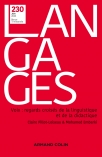
Romantisme n° 166 (4/2014)
Pour acheter ce numéro, contactez-nous
Recevez les numéros de l'année en cours et accédez à l'intégralité des articles en ligne.
Depuis quelque temps, la recherche se penche sur une double évolution de l’histoire de l’art à la fin du XIXe siècle, à savoir son institutionnalisation progressive en tant que discipline, et la racialisation du discours employé par certains de ses praticiens. Si l’on a pu analyser les conséquences de cette évolution pour le parcours intellectuel d’Eugène-Emmanuel Viollet-le-Duc, une attention plus grande portée au rapport texte/image au sein de son ouvrage illustré de 1876 permet de problématiser l’équivalence entre voir et savoir qui traverse la pensée de l’architecte. Là où la rhétorique raciale exige une simplification maximale pour la démonstration de la thèse gobinienne dont cet ouvrage se veut le véhicule, les aspects visuels du texte, en revanche, livrent une quantité de données « superflues » du point de vue de la fonction démonstrative.
For a while now an object of interest for scholarship has been the double evolution of art history at the end of the 19th century, with its institutionalisation as a discipline and the racialization of the discourse of some of tis practitioners. If it has been possible to analyse the consequences of this evolution on the intellectual development of Eugène-Emmanuel Viollet-le-Duc, more attention focused on the relationship between text and image in his illustrated work from 1876, Habitations of Man in All Ages, can lead to questioning the equivalence between seeing and knowing which runs through the architect’s work. Where the rhetoric of race requires maximum simplification for the demonstration of the Gobinian thesis this work diffuses, the visual aspects of the work, on the other hand, deliver quantity of data “superfluous” from the point of view of the demonstration’s needs.

